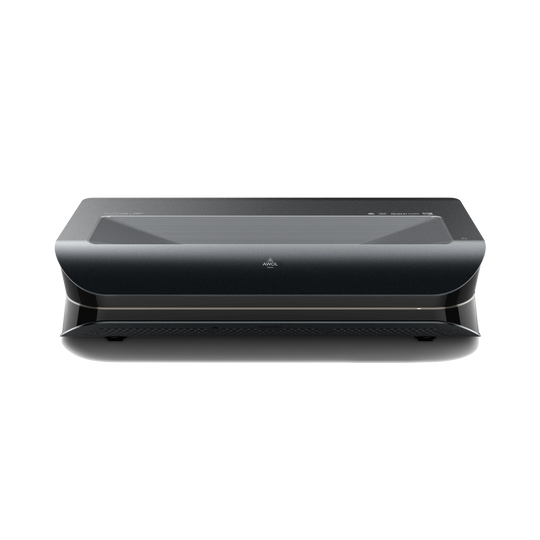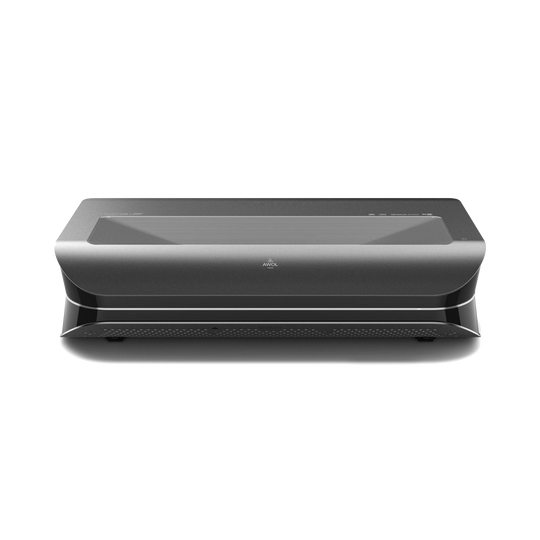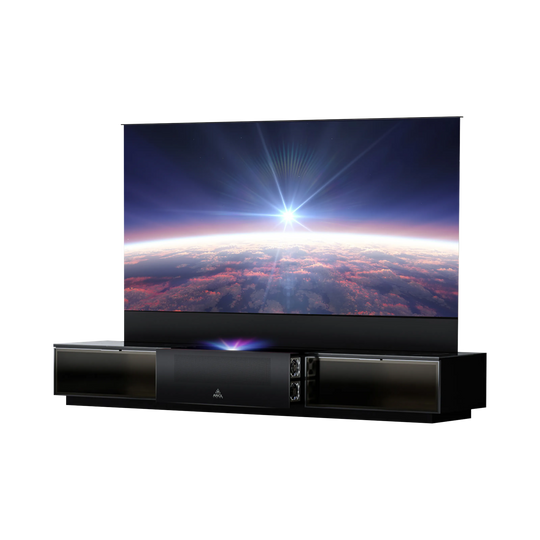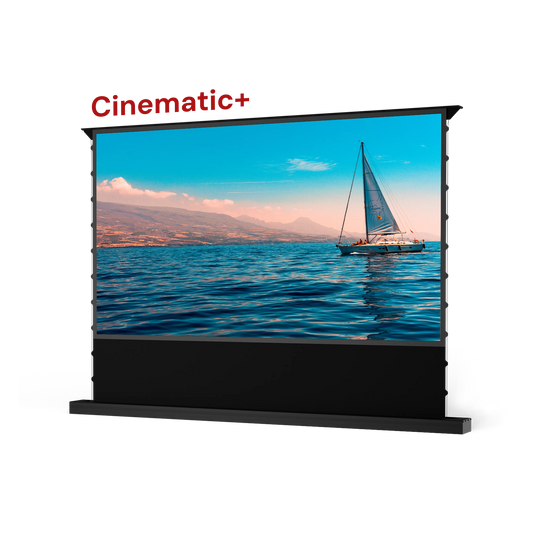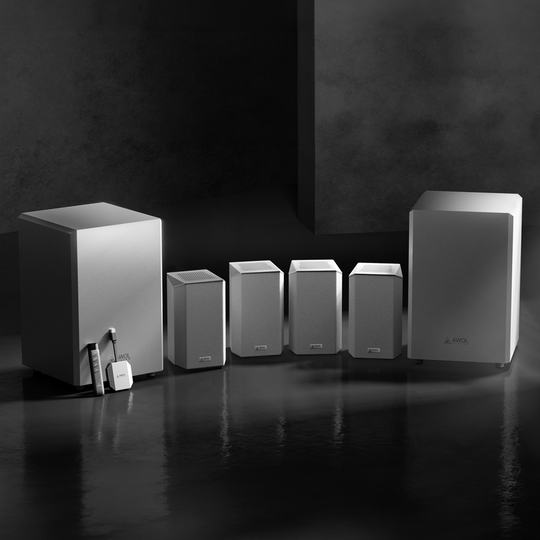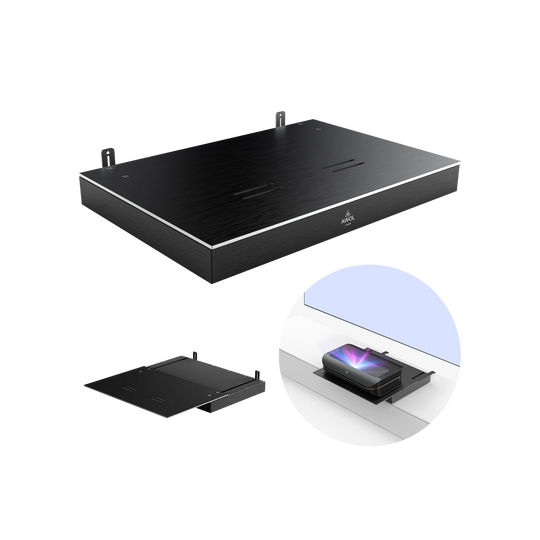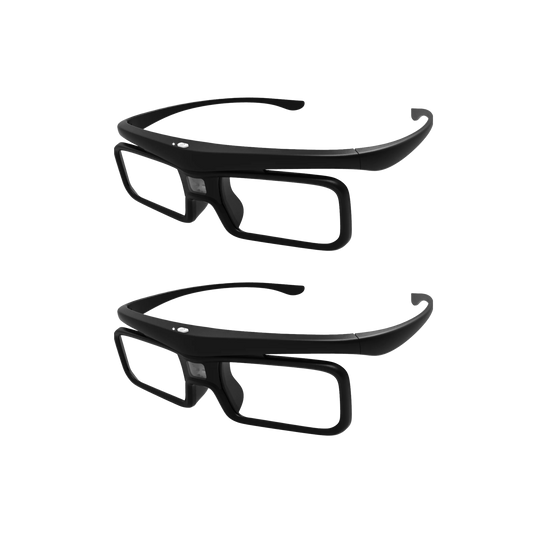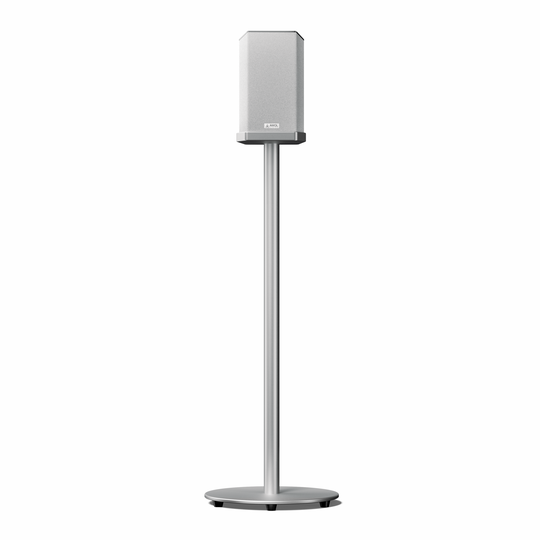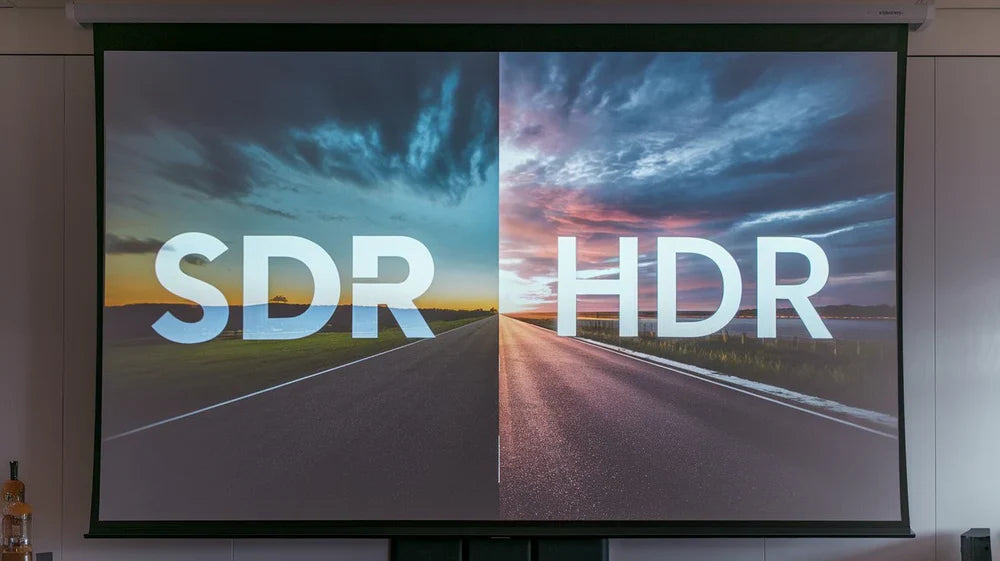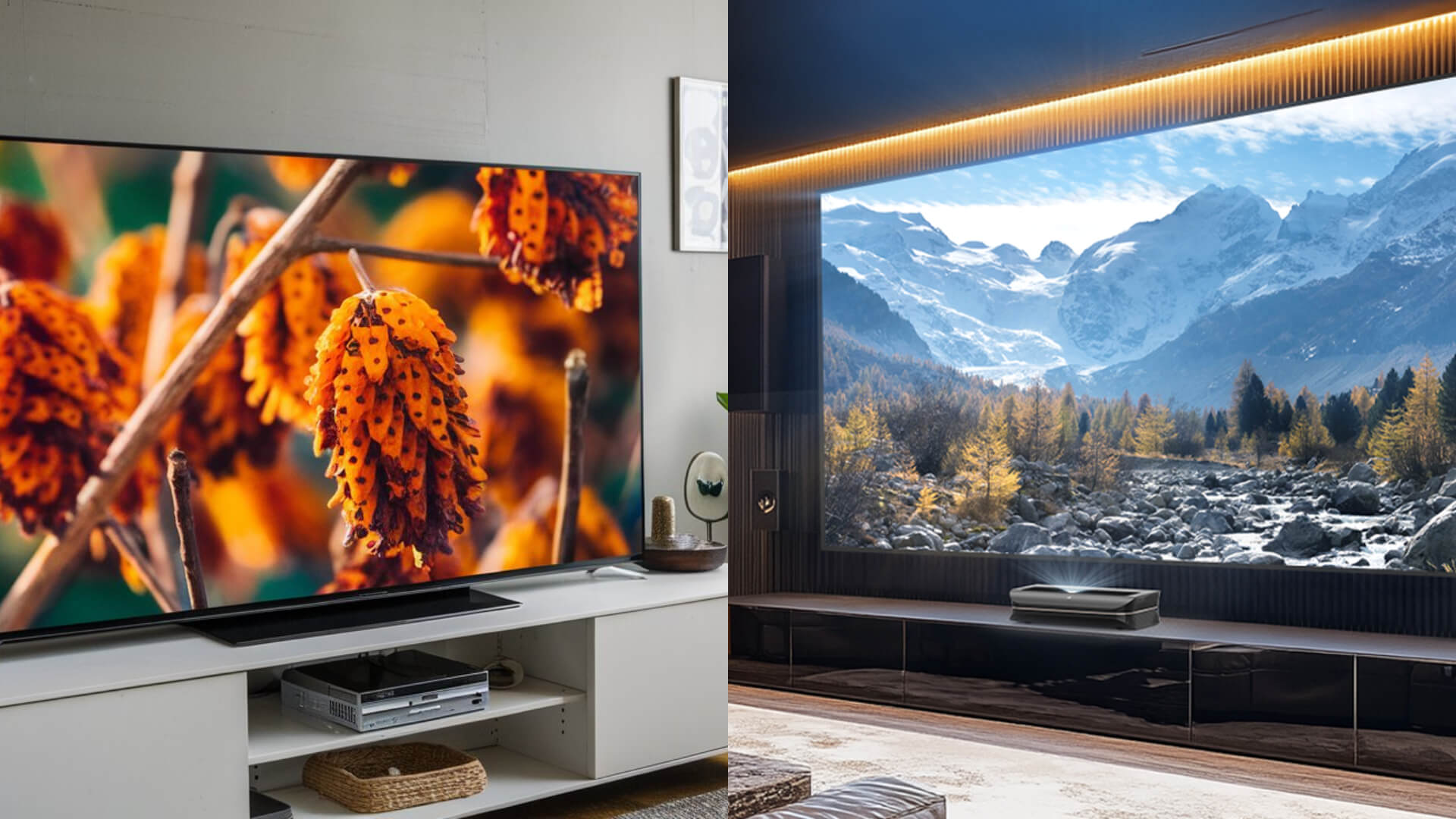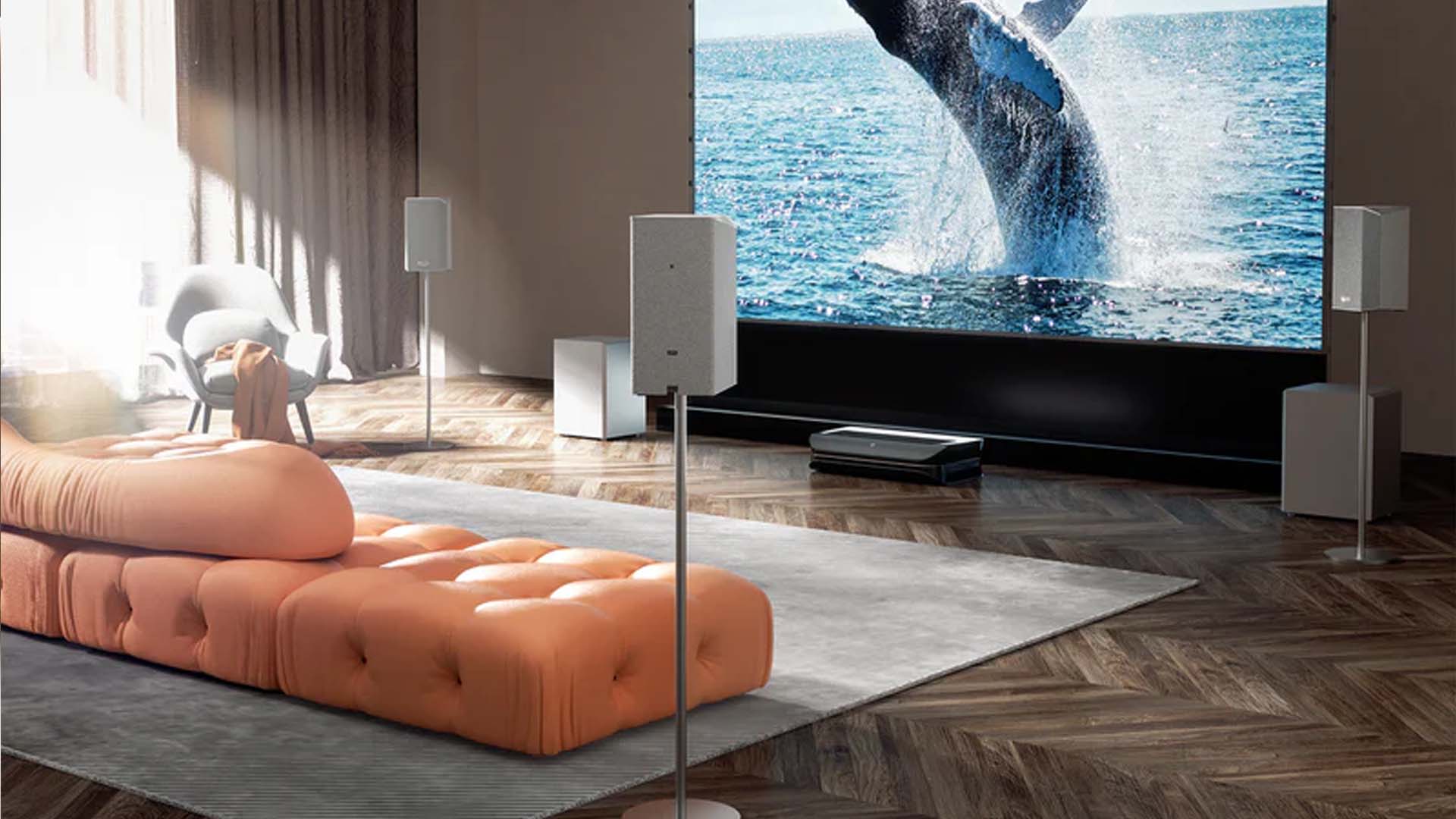Every movie fan dreams of this: bringing the captivating, thrilling experience of a cinema visit into the comfort of their own home. A huge screen, rich sound, and an image that pulls you directly into the action. But when planning the perfect home theater, you inevitably encounter a maze of technical terms. Two of the most important and often confusing ones are SDR and HDR.
What do these abbreviations for image quality on your canvas mean? And why is this difference so crucial, especially with a projector? Don't worry. This article clearly explains the differences and shows why modern HDR, particularly with laser projectors, is the key to a truly breathtaking image.
What is SDR? The traditional standard for home video
SDR, or Standard Dynamic Range, has been the established standard for decades for almost all visual content, from DVD to conventional television to standard Blu-ray. The specifications of SDR were developed at a time when cathode ray tube (CRT) televisions were the dominant technology, and are therefore shaped by their technical limitations.
The key points of SDR are:
-
Brightness: Contents are for a peak brightness of approximately 100 Nits mastered.
-
Color depth: SDR uses 8-Bit-Colors, which allows for approximately 16.7 million shades.
-
Color space: The displayable color range is limited to the Rec. 709-Standard limited.
For its time, SDR was a reliable technology. However, on a large cinema screen, it reaches its limits. The image can lose brightness and dynamics, and subtle color transitions are not always perfect.
What is HDR? A window to a more realistic world
HDR stands for High Dynamic Range und ist die moderne Antwort auf die Limitierungen von SDR. Das Ziel von HDR ist es nicht einfach, alles heller zu machen. Es geht darum, ein Bild zu erzeugen, das in Tiefe, Farbe und Helligkeit der Realität und der Wahrnehmung des menschlichen Auges viel näher kommt.
The technology was specially developed to more details in the brightest and darkest areas of the image at the same time to represent – details that are often lost in SDR. For projectors, this advantage is enormous, as HDR provides the necessary brightness to brilliantly and impressively display even bright scenes, such as an explosion or dazzling sunlight, on a screen over 100 inches.
The big comparison: SDR vs. HDR on the screen
The technical difference between the two technologies is enormous. The following table summarizes the key points:

|
Feature |
Standard Dynamic Range (SDR) |
High Dynamic Range (HDR) |
|
Peak Brightness |
approx. 100 nits (mastered) |
600 - 4,000+ nits (mastered) |
|
Color depth |
8-bit (16.7 million colors) |
10-Bit (1.07 billion colors) |
|
Color space |
Rec. 709 (Standard HDTV) |
DCI-P3 / Rec. 2020 (Cinema Standard) |
|
Metadata |
None (static) |
Static (HDR10) or Dynamic (Dolby Vision, HDR10+) |
Is HDR really better? Yes, but the performance of the projector is crucial.
The short answer is: Yes, HDR is technologically and visually superior. It delivers an image with more depth, more brilliant colors, and stunning realism. But there is a crucial catch: the playback device must have the necessary performance to make these advantages visible.
Attention: An inexpensive or older projector with weak HDR implementation can produce a "washed out" or too dark image. In such cases, a good SDR image can sometimes even look better. To make the benefits of HDR visible on a large screen, a projector must have enormous brightness and a wide color gamut. Modern tri-color laser projectors like the AWOL Vision LTV-3500 Pro are clearly at an advantage here: With 3000 ISO lumens Brightness and a color gamut coverage of 107% of the BT.2020 color space they deliver the necessary performance to display HDR content as brilliantly and color-accurately as intended by the filmmakers.
The HDR Format Jungle: HDR10, Dolby Vision & More in Home Cinema
To make it a bit more complex, there is not just "one" HDR. The different formats mainly differ in the way they transmit information about the image to the projector.
-
HDR10: This is the open base standard. It uses static metadata, which means that a single, fixed shot is used for the entire film. This is good, but often a compromise.
-
Dolby Vision & HDR10+: These advanced formats use dynamic metadata. Here, the image is optimized scene by scene or even frame by frame. The result is a much more precise reproduction that corresponds to the director's vision.
While most projectors only support the basic HDR10 standard, the premium format was Dolby Vision lange Zeit fast ausschließlich auf High-End-Fernsehern zu finden. Dies ändert sich nun: Fortschrittliche Laser-Projektoren wie der LTV-3500 Pro bringen Dolby Vision auf die große Leinwand und unterstützen zudem HDR10+. This gives the user maximum flexibility and ensures that content from all major streaming providers is played back in the best possible dynamic quality.
Your checklist for the perfect HDR home theater
To ensure that you get the best possible HDR experience, the entire chain must be right.

-
Point 1: The right projector & the suitable screen Besides a powerful projector, the screen is crucial for image quality. Especially for HDR, a Contrast or ALR screen (Ambient Light Rejecting)It improves the black level and ensures that the HDR effect is maintained even in rooms that are not completely darkened.
-
Point 2: The seamless signal chain Make sure that all devices in the chain – from the player through any soundbar to the projector – support copy protection HDCP 2.2 support. In addition, a HDMI 2.0a-Connection the minimum, for 4K at 120Hz is HDMI 2.1 necessary. If compatibility is missing on even one device, an HDR image is often not displayed.
-
Point 3: The Contents High-quality HDR content can be found on streaming services such as Netflix, Disney+, and Amazon Prime Video, as well as on 4K UHD Blu-rays, which are considered the gold standard for the best picture and sound quality.
Conclusion: HDR is the future of home cinema – with the right projector
The leap from SDR to HDR is one of the most significant advances in video technology. For a true, immersive cinema experience that transports you to other worlds, a modern laser projector with excellent HDR capabilities is essential today. High brightness, a vast color gamut, and support for dynamic formats like Dolby Vision and HDR10+ are the ingredients that turn a simple movie night into an unforgettable event.
Frequently Asked Questions (FAQ)
-
What is better, HDR or SDR? Technically and visually, HDR is superior. It offers a more realistic, higher-contrast, and more colorful image, provided your projector is powerful enough to display it.
-
Does Netflix support HDR? Yes, Netflix offers many of its original productions in Dolby Vision and HDR10. However, you need the Premium subscription for this.
-
What is the main difference between SDR and HDR? The main difference is the dynamic range. HDR can display a much wider range between the darkest and brightest pixels while also showing more colors.
-
Do I need a new projector for HDR? Yes. To experience true HDR, you need a projector that can process HDR signals and has high brightness and a wide color gamut to make the benefits visible.
